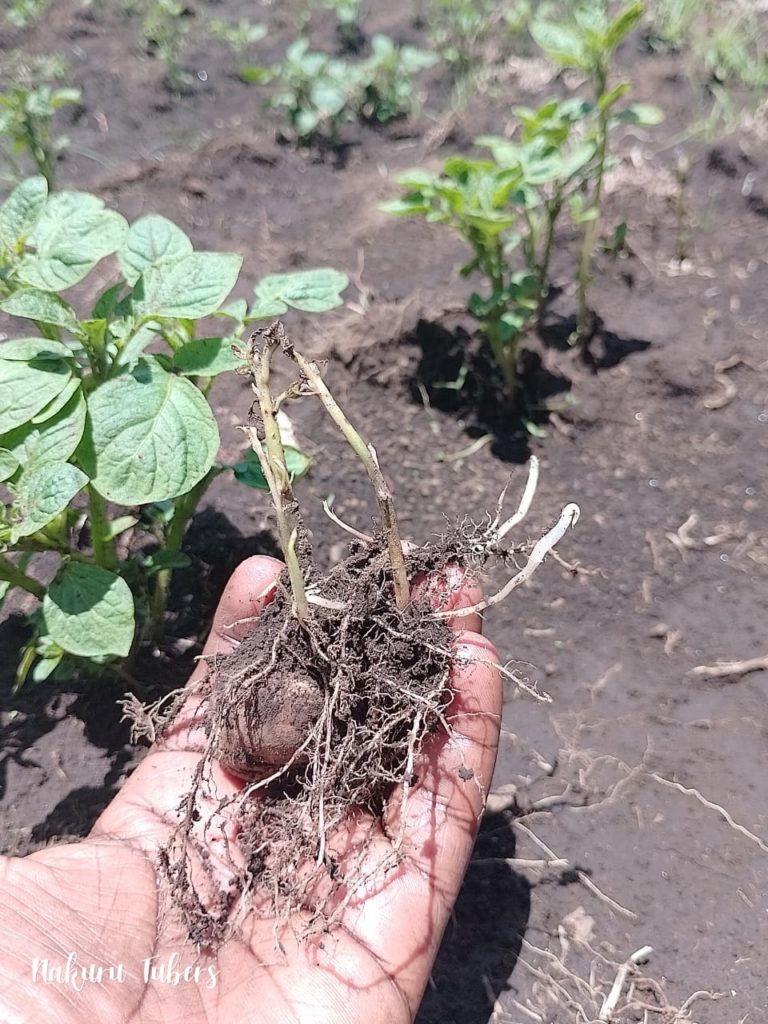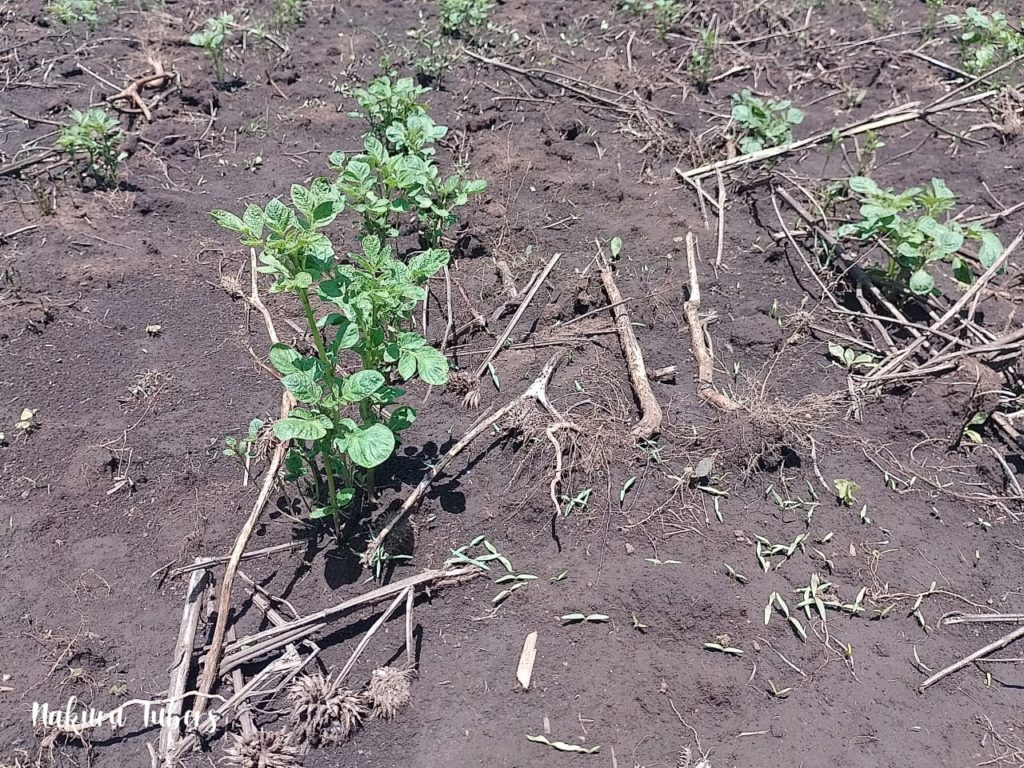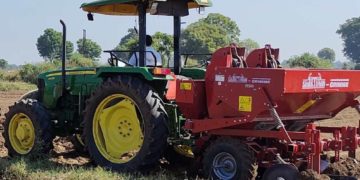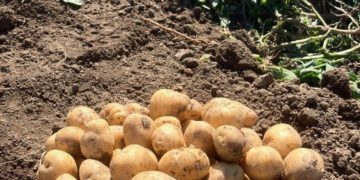In potato farming, healthy roots are the foundation of strong plants and high yields. Yesterday, I visited the shamba to check on the potato crop and saw just how crucial healthy roots are to strong, productive plants. A well-developed root system ensures high yields and quality tubers by helping the plant access water and nutrients effectively. Let’s explore how potato roots develop and what you can do to support them for a successful harvest.

How Potato Roots Grow
Potato roots start from the tuber and form a fibrous system, spreading out to absorb water and nutrients. These roots include:
- Primary roots: The first roots from the tuber, which secure the plant.
- Adventitious roots: New roots that emerge along the stems or sprouts as they grow from the tuber, providing extra support and nutrient absorption.
- Lateral roots: Branch out from the primary and adventitious roots for better nutrient access.
- Root hairs: Tiny extensions that increase surface area to maximize absorption.

Why Roots Matter
A strong root system helps potatoes access nutrients and moisture, directly impacting yield and quality.
Tips for Healthier Roots
- Prepare loose soil for better root spread.
- Ensure consistent moisture without waterlogging.
- Practice good earthing-up at the right time, which promotes root growth along the stem, protecting tubers and supporting nutrient uptake.
- Provide balanced nutrients like nitrogen and potassium.
- Implement crop rotation to avoid soil diseases.
Supporting healthy root growth is essential for successful potato farming. Better roots mean better crops.
About the Author
This article is contributed by Enock (Kipkorir) Rugut, Co-Founder of Nakuru Tubers, based in Egerton, Nakuru, Kenya. Enock is a potato researcher and innovator, a plant breeder working in biotechnology, and a food security advocate.

















